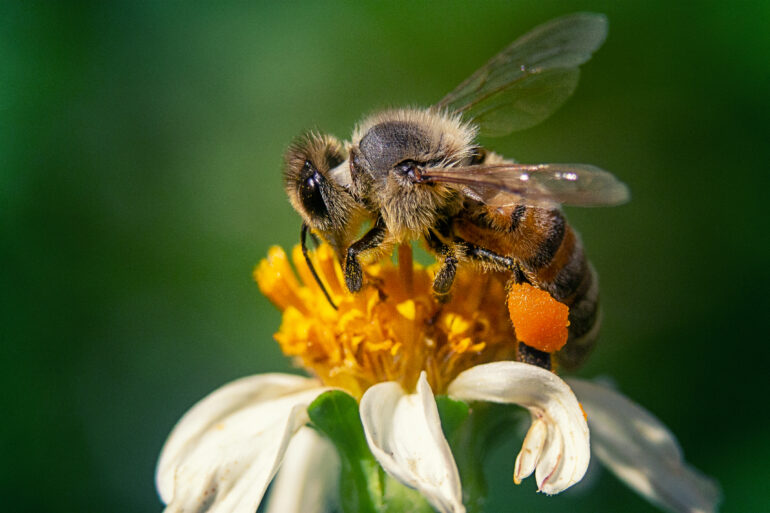
By Lorie Ham
August 19 is National Honey Bee Awareness Day! According to Holiday Insights, it was declared in 2009 by Thomas J. Vilsek, the U.S. Secretary of Agriculture, and is celebrated on the third Saturday of August every year. It was originally created for beekeepers as a day of education and promotion of honey bees and honey. The third Saturday in August was selected so beekeepers would have a new supply of honey to promote.
Holiday Insights goes on to state that many bees have to travel 55,000 miles to produce just one pound of honey. To get that pound of honey, those bees need to gather nectar from two million flowers. A single bee will gather just a half teaspoon of honey in its lifetime. According to the U.S. Department of Agriculture, honeybees pollinate $15 billion worth of crops in the United States each year, including more than 130 types of fruits, nuts, and vegetables. Honeybees also produced honey that was worth around $3.2 million in 2017, according to USDA-National Agricultural Statistics Service (NASS).
“Many people don’t realize how important pollination is to our food supply,” says Mennonite Aid Plan/Mennonite Insurance Services CEO Jerry Linscheid. “Over the last decade or so, we’ve seen dramatic declines in the bee population.”
USAFacts.org states that US bee populations are declining for a multitude of reasons which include parasites, pesticides, habitat loss, and disease. The losses have critical implications for food production and ecosystem health. More than 40% of all colonies were afflicted with varroa mites in 2022, a parasite that targets bees.
An article on WSU Tree Fruit says that 2023 is looking like it will be one of the worst years for honey bees in nearly two decades. The article goes on to say more about the varroa mites and the effect that climate conditions like hurricanes, drought, and flooding, contribute to making this year the worst year since the disastrous year of 2005.
The Bee Conservancy offers some suggestions on things we can do to help the honey bees. They include planting a bee-friendly garden, avoiding the use of pesticides and herbicides, creating a bee bath, and becoming a community scientist. You can learn more about these and other suggestions on their website.
While bees are incredibly important, they can at times cause problems as well. What happens if bees inhabit your home and honey leaks inside? Or if you keep a beehive on your property and a neighbor gets stung? Do you have any responsibility? According to an article on Policy Genius, property damage is not covered by your homeowner policy. However, if bees have taken up residence in any part of your home or property the best way to get rid of them is to contact a local beekeeper—not only can they help solve the problem, they can preserve the lives of those precious bees.
“As to whether a homeowner is liable if someone gets stung by a bee, the short answer is maybe,” says Linscheid. “From a homeowner’s perspective, the important thing is that the insurance company will defend you if you get sued because of a bee sting. Liability depends on a number of factors. Did the homeowner know about the bees? Did the homeowner have a duty to remove the bees? Did the bee sting come from the homeowner’s bees? Did the injured person provoke the bees? However, whether or not the homeowner is found liable, the insurance company will provide the defense of that claim. Defense attorney costs can be a large part of the total cost of a claim, and the homeowner does not have to foot that bill.”
If you have any insurance questions about bees, be sure to reach out to Mennonite Aid Plan/Mennonite Insurance Services and they will be happy to answer your questions 559-638-2327.

